Occupational environment monitoring at a weapons manufacturing factory
99,000 ₫
Note: The above price is calculated for one sample. Prices may vary depending on the area of the environment to be monitored and market fluctuations. For more accurate pricing, please refer to the price list or contact our consulting staff directly.
Monitoring the environment of weapons production factories involves collecting, analyzing, and evaluating workplace factors that may be harmful to workers health.
Table of Contents
Toggle1. Overview of a Weapons Manufacturing Factory
a. What is a weapons manufacturing factory?
A factory for weapons manufacturing is an industrial facility where various types of weapons and military systems are designed and produced. This factory can manufacture weapons such as firearms, artillery, missiles, ammunition, bombs, aircraft, warships, tanks, and other military equipment.
Weapons manufacturing factories typically have specialized production lines, modern machinery, and expert personnel to fabricate and assemble weapon components and systems. The production processes at these factories comply with high technical standards and strict safety regulations due to the hazardous nature and consequences of weapons.
Weapons manufacturing factories are often an essential part of a country’s defense industry. They play a critical role in providing and maintaining military capability and national security. However, the operation of weapons manufacturing factories can also be controversial due to environmental impacts, the potential for weapons to be used in conflicts, and issues surrounding arms export control.

b. Production stages in a weapons manufacturing factory
The production stages in a weapons manufacturing factory can vary depending on the type of weapon being produced. However, below is an overview of the general stages typically involved in weapon production:
- Design and research: The process begins with designing and researching new weapons. Engineers and specialists determine requirements, develop concepts, and create detailed designs for the weapon.
- Component fabrication: Weapon components, including metals, plastics, electronics, and other materials, are produced or sourced from suppliers. This stage includes machining, forging, casting, precision engineering, cutting, and component assembly.
- Weapon assembly: Components are assembled into the final product. This includes assembling and integrating mechanical, electronic, optical, and other systems to form a complete weapon.
- Testing and inspection: Weapons are tested and inspected to ensure quality and performance. Testing processes include functional tests, accuracy tests, durability assessments, and other specialized trials.
- Packaging and transportation: After passing testing and inspection, weapons are packaged according to safety standards and transported to the usage or storage location.

c. Types of machinery used in a weapons manufacturing factory
The types of machinery used in a weapons manufacturing factory can vary depending on the type of weapon being produced. Below are some common machines that may be used in the weapon production process:
- Lathes, milling machines, and grinders: These are essential machine tools used to process metal weapon components. They are used to cut, grind, and shape precise and complex parts.
- Component fabrication machines: Includes presses, casting machines, precision machining equipment, forging machines, cutting machines, welding machines, and other machinery to produce weapon components. These machines ensure that component fabrication is performed accurately and efficiently.
- Testing and inspection machines: Specialized testing and inspection equipment is used to ensure weapon quality and performance. This includes functional testing machines, measuring equipment, durability testing machines, and other testing devices.
- Laser cutting and processing machines: Laser technology is used in weapon manufacturing to cut and process metal and non-metal materials. This technology allows high precision and the creation of complex parts without damaging the materials.
- Industrial robots: Industrial robots can be used to perform automated tasks in weapon production. They can be programmed for assembly, welding, inspection, and packaging tasks.
- Automated manufacturing and assembly machines: Automated systems can be used to increase productivity and ensure accuracy in weapon production. They can automate stages such as assembly, testing, and packaging.

d. Occupational diseases that may occur for workers in a weapons manufacturing factory
Workers in a weapons manufacturing factory may be exposed to certain occupational diseases due to hazardous factors in the weapon production process. Some common occupational diseases include:
- Respiratory diseases: Employees working in weapons manufacturing environments may be exposed to metal dust, chemical dust, or other chemicals during machining and assembly. This can lead to pneumonia, chronic obstructive pulmonary disease (COPD), and other respiratory issues.
- Skin diseases: Exposure to chemicals and materials during weapon production can cause skin irritation, allergies, dermatitis, and other skin-related issues.
- Toxic exposure: Hazardous substances such as lead, mercury, heavy metal compounds, and other chemicals may exist in the workplace and pose a risk of poisoning. This can cause serious health problems affecting the nervous, circulatory, and respiratory systems.
- Occupational accidents: Some jobs in the weapons factory may involve risks of accidents such as injuries from sharp objects, metal fragments, or explosions and fires.
- Hearing-related conditions: Workers may be exposed to high noise levels from manufacturing and testing processes, potentially causing hearing damage, hearing loss, or tinnitus.

e. Common types of weapons on the market
There are many common types of weapons on the market, and the list below highlights some important and widely used types:
- Rifles: Includes semi-automatic and automatic rifles such as AK-47, M16, AR-15, and SVD. Rifles are used for military and sporting purposes.
- Machine guns: Includes M249 SAW, PKM, MG42, and M60, which are capable of sustained fire and are used in support roles.
- Handguns: Includes pistols such as Glock, Beretta, Colt 1911, and SIG Sauer P226. Handguns are often used for self-defense or as backup weapons.
- Sniper rifles: Includes Barrett M82, Accuracy International AW50, and CheyTac M200 Intervention. Sniper rifles are typically used for long-range targets and special operations.
- Precision rifles: Includes Remington 700, Winchester Model 70, and Mauser 98, used for hunting and specialized shooting.
- Air guns: Weapons using compressed air or CO2 to fire projectiles, often used in sport shooting or personal protection models.
- Grenade launchers: Includes RPG-7, M72 LAW, and AT-4, designed for anti-armor and anti-vehicle applications.
- Nuclear, chemical, and biological weapons: Special and highly dangerous weapons, including nuclear, chemical, and biological weapons, designed for destructive purposes and posing severe risks to life and the environment.
2. Overview of workplace environmental monitoring services
a. What is workplace environmental monitoring at a weapons manufacturing factory?
Workplace environmental monitoring (or labor environment measurement) at a weapons manufacturing factory involves collecting, evaluating, and analyzing measurements of environmental factors in the workplace. The goal is to take timely corrective actions, minimize environmental hazards to worker health, and prevent occupational diseases. Environmental monitoring is a mandatory requirement for weapons manufacturing factories.
Workplace environmental monitoring plays a crucial role in caring for, protecting, and enhancing workers’ health, as the primary resource of a business and the direct source of its profit is the workforce. Workers frequently exposed to hazardous factors exceeding permissible limits may experience health issues and develop occupational diseases.
REGISTER FOR WORKPLACE ENVIRONMENTAL MONITORING SERVICE
b. Nam Viet’s workplace environmental monitoring program
Nam Viet’s workplace environmental monitoring program is developed by engineers specializing in labor safety and environmental protection. Aiming to ensure worker health and safety, this program employs modern measurement methods to monitor air quality, water, microclimate factors, physical conditions, dust, and more in the workplace. This program is essential for ensuring a safe working environment and protecting employee health.
Additionally, Nam Viet’s program plays a significant role in researching and developing solutions to improve workplace environmental quality. With the dedication and professionalism of its monitoring experts, Nam Viet’s exclusive program is a breakthrough in labor safety management and environmental protection in Vietnam.

c. Standardization in workplace environmental measurement processes
Standardization in Nam Viet’s workplace environmental measurement process is crucial to ensuring the accuracy and reliability of measurement results. The program follows recognized standards and procedures from Ho Chi Minh City Department of Health. This ensures the collected data is highly reliable for evaluating workplace conditions and making decisions to improve the environment and protect worker health.
These standardized procedures also ensure that measurements are conducted by qualified monitoring specialists with extensive experience, enabling managers and experts to trust An Toan Nam Viet’s results and make accurate, valuable decisions to protect both workers’ health and the environment.
By applying standardization in workplace environmental measurements, Nam Viet demonstrates its commitment to ensuring a safe work environment and protecting workers’ health, while contributing to the development and improvement of labor safety and environmental management in Vietnam.
d. Reporting results of workplace environmental monitoring in weapons manufacturing factories
Monitoring results are prepared according to Form No. 04, Appendix III issued with Decree 44/2016/ND-CP and prepared in two copies: one copy is sent to the workplace that contracted the monitoring service, and the other is retained by the monitoring organization.
The retention period for workplace environmental monitoring results is indefinite according to legal regulations.

e. Frequency of workplace environmental monitoring according to legal regulations
According to Clause 2 of Article 18 of the Law on Occupational Safety and Health 84/2015/QH13, employers must conduct workplace environmental monitoring to assess harmful factors at least once a year.
f. Deadline for submitting workplace environmental monitoring reports according to legal regulations
The deadline for submission is before December 31 each year. Enterprises in production facilities are required to submit workplace environmental monitoring reports to the local Department of Health where the factory is headquartered and where employees work.
When there are changes in technology, production processes, or when renovating or upgrading a factory that may generate new hazardous factors affecting worker health, enterprises must update occupational hygiene records regarding harmful factors to be monitored.
g. Penalties for violations of workplace environmental monitoring regulations for employers
According to Article 27 of Decree No. 12/2022/ND-CP dated January 17, 2022, on administrative penalties in labor, social insurance, and Vietnamese workers going abroad under contract:
- Clause 2: A fine of 2,000,000 – 5,000,000 VND for employers who fail to publicly inform employees at the monitored workplace and areas of inspection, evaluation, and management of hazardous factors immediately after receiving monitoring results and evaluation reports.
- Clause 3: A fine of 20,000,000 – 40,000,000 VND for employers who do not conduct workplace environmental monitoring to control harm to worker health as required by law.
- Clause 4: A fine of 40,000,000 – 60,000,000 VND for employers who collaborate with monitoring organizations to commit fraud in environmental monitoring activities but have not reached the level of criminal liability.
3. Harmful Environmental Factors for Workers in Weapon Manufacturing Factories
Workers in weapon manufacturing factories may be exposed to many harmful environmental factors. Below are some potentially dangerous environmental factors:
- Toxic chemicals: During weapon production, employees may use and be exposed to toxic chemicals such as chemical poisons, carcinogens, neurotoxins, and substances harmful to the nervous system. Workers can be exposed to these chemicals via fumes, dust, or direct contact.
- Metal dust and particles: Weapon processing and fabrication may generate metal dust and fine particles. Inhaling metal dust can cause respiratory issues, and direct contact with sharp metal particles can result in injuries and trauma.
- Noise: Weapon production processes can generate high noise levels from firearms, machinery, and other equipment. Long-term exposure to noise may damage hearing and cause issues such as hearing loss and tinnitus.
- Thermal exposure: Weapon fabrication processes, such as welding and forging, can generate high temperatures. Workers near heat sources may suffer burns or other heat-related problems.
- Explosive materials: Weapon factories may use and handle explosive materials such as gunpowder, explosives, and other explosive substances. Working with explosives creates significant safety and security risks.
- Auxiliary materials and waste: Weapon production can generate waste and auxiliary materials that may pollute the environment and affect workers’ health.
REGISTER FOR OCCUPATIONAL ENVIRONMENT MONITORING SERVICE
4. Measures to Improve the Working Environment in Weapon Manufacturing Factories
Improving the working environment in weapon manufacturing factories is essential to protect employee health and ensure safety. Here are some measures to enhance the working environment in weapon factories:
- Ensure a safety management system: Establish and adhere to clear occupational safety policies and procedures. Train employees on safety, provide instructions for using personal protective equipment (PPE), and implement hazard prevention measures.
- Chemical control: Identify and assess hazardous chemicals and apply control measures to reduce employee exposure. Ensure safe usage and storage of chemicals and provide guidelines for chemical waste handling.
- Metal dust and particle management: Apply measures to control metal dust and particles, such as dust extraction, ventilation systems, and proper PPE to prevent exposure.
- Noise control: Implement noise control measures such as ear protection, isolating noise sources, and designing safer industrial processes to reduce noise at the source.
- Temperature and heat exposure management: Ensure a comfortable working environment with appropriate temperature and humidity. Provide protective clothing and heat shielding equipment to protect employees from thermal hazards.
- Explosive material management: Establish safe procedures for using, storing, and transporting explosives. Train employees on safe handling of explosive materials accurately and responsibly.
- Regularly conduct occupational environment monitoring in factories, collecting and analyzing harmful factors affecting workers and adjusting to reduce hazards to prevent occupational diseases.
5. Benefits of Regular Monitoring in Weapon Manufacturing Factories
An Toan Nam Viet provides businesses with excellent advantages when using occupational environment monitoring services in accordance with Decree 44/2016/ND-CP on the management and control of harmful factors in the working environment affecting employees.
- Businesses can proactively control harmful factors in workshops or factories.
- Receive advice and recommendations on measures to minimize harmful factors and improve the quality of the working environment.
- Indirectly protect human resources, a key factor in business development.
- Reduce the impact of occupational diseases on health, minimizing future treatment costs.
- Improved employee health ensures consistent product quality and maintained production output.
- Comply with labor safety laws, avoiding legal risks.
- Enhance credibility and professionalism in all aspects, elevating the company’s brand.
An Toan Nam Viet’s environmental monitoring service is a solution to minimize the impact of occupational diseases, contributing to a clean and high-quality working environment.

6. Nationwide Occupational Environment Monitoring Center
Occupational Environment Monitoring Center of An Toan Nam Viet is a professional unit for supervising and measuring workplace environmental quality across all provinces in Vietnam. With an experienced team of monitoring specialists, the center uses modern measurement equipment, ensuring accuracy and reliability.
Besides providing monitoring services, the center supports clients in planning, handling, and tracking workplace environmental issues. Following the motto “customer-centered,” the center prioritizes client satisfaction, meets all client needs, and commits to delivering the best solutions for businesses.
REGISTER FOR OCCUPATIONAL ENVIRONMENT MONITORING SERVICE
With investments in technology, equipment, and human resources, An Toan Nam Viet’s monitoring center has become a reputable unit in occupational environment monitoring in Ho Chi Minh City, with the following goals:
- We always value the brand reputation and quality of our services.
- We provide clients with the best and most suitable options possible.
- Along with a team of experienced Masters and Engineers aiming to protect the environment and benefit businesses.
- Choosing An Toan Nam Viet Environmental Monitoring provides professional service from experts along with the best cost advantages.
The occupational environment monitoring process at An Toan Nam Viet includes the following steps:
- Before conducting monitoring, ensure all machines and equipment are calibrated and verified according to legal regulations.
- Strictly follow monitoring procedures committed to the Department of Health.
- Report monitoring results honestly to employers.
- If results indicate unsafe conditions for workers, An Toan Nam Viet will provide solutions, and the workplace will implement as follows:
- Implement measures to improve working conditions, minimizing exposure to harmful factors and preventing occupational diseases.
- Organize medical check-ups to detect occupational diseases and related conditions early for employees in unsafe environments.
- Provide in-kind compensation to employees in accordance with labor law.

7. Occupational Environment Monitoring Price List
To help businesses conduct occupational environment monitoring professionally and effectively, An Toan Nam Viet provides clients with a high-quality and reasonably priced monitoring service price list.
- Our price list provides detailed information about the costs of our monitoring services, including fees related to transportation, measurement, analysis, and reporting. Clients can be assured of the accuracy and reliability of our monitoring reports.
- We are committed to offering the most competitive and reasonable prices on the market and are always ready to answer any questions about monitoring services quickly and professionally.
- With An Toan Nam Viet’s monitoring price list, clients can easily select service packages that suit their needs. We guarantee the highest satisfaction with professional service quality.
No comments yet

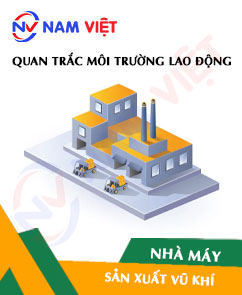
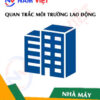
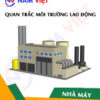

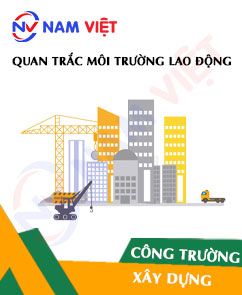


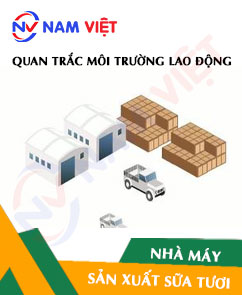
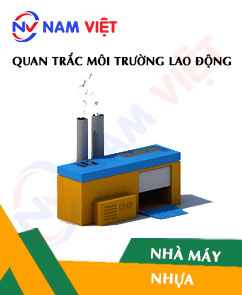


Review Occupational environment monitoring at a weapons manufacturing factory
There are no reviews yet.